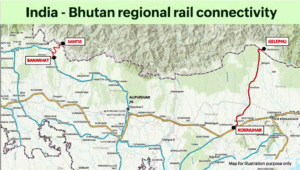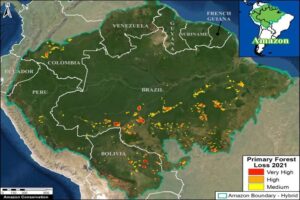
Why in News?
The Economic Survey 2024-25 has been released, providing key insights into India’s economic resilience, external trade challenges, inflation trends, monetary policy, and long-term strategies for achieving the vision of Viksit Bharat (Developed India) by 2047. The survey discusses the need for fiscal prudence, regulatory easing, investment in infrastructure, and productivity enhancement in various sectors. Additionally, it highlights geopolitical risks, global economic trends, and India’s trade policies.
Introduction
The Economic Survey plays a crucial role in guiding India’s policy decisions by assessing economic performance and recommending future reforms. This year’s survey emphasizes three core strategies for sustainable growth:
- Fiscal Prudence – Maintaining responsible public spending while ensuring targeted investment in key sectors.
- Monetary Policy Easing – Adopting accommodative policies to ensure stability in inflation and exchange rates.
- Deregulation – Easing investment norms, improving ease of doing business, and reducing regulatory burdens.
Given global trade uncertainties, inflation concerns, and domestic growth imperatives, the survey suggests a balanced approach to policy-making that prioritizes long-term economic resilience.
Point-wise Summary
- External Trade Challenges & Forex Resilience
- India’s foreign exchange (forex) reserves remain strong, despite large outflows.
- The survey highlights challenges posed by geopolitical conflicts affecting global trade, such as:
- Red Sea disruptions impacting global shipping.
- Geopolitical tensions affecting exports and import prices.
- Non-tariff barriers like the Carbon Border Adjustment Mechanism (CBAM) and European Union Deforestation Regulation (EUDR) pose risks to India’s export growth.
- The survey recommends export diversification to reduce dependence on specific markets and enhance competitiveness.
- India’s Foreign Direct Investment (FDI) & Ease of Doing Business
- FDI inflows have reduced compared to the previous year, requiring better regulatory frameworks to attract investment.
- The survey proposes tax certainty and advance pricing agreements to enhance investor confidence.
- Simplified regulations are needed to boost business efficiency, making India a more attractive investment destination.
- Inflation Trends & Monetary Policy Recommendations
- Inflation has been largely driven by food price fluctuations, particularly for onions, tomatoes, and pulses.
- The survey suggests that monetary policy alone cannot control food inflation, as it is linked to supply-side factors such as:
- Poor agricultural yield due to unpredictable weather.
- Lack of price monitoring mechanisms.
- Inadequate supply-chain interventions.
- The RBI’s monetary policy should focus on long-term inflation control rather than reacting to temporary food price shocks.
- Growth Strategy for Viksit Bharat (Developed India) 2047
- To achieve the Viksit Bharat vision, India’s GDP must grow at 8% annually in real terms over the next decade.
- Growth projections align with IMF estimates, which predict 0.5% annual depreciation of the rupee against the US dollar.
- The investment rate must rise from 31% to 35% to sustain high economic growth.
- Key sectors requiring investment:
- Manufacturing – Strengthening domestic production and reducing dependence on imports.
- Artificial Intelligence (AI), Robotics, Biotechnology – Promoting innovation and skill development.
- Infrastructure – Large-scale projects for connectivity, transport, and urbanization.
- Job Creation & MSME Growth
- The survey proposes creating over 7 million non-farm jobs, particularly in manufacturing and services.
- Improving education and skill training is critical to equip the workforce for new-age jobs.
- The role of Micro, Small, and Medium Enterprises (MSMEs) in economic growth is emphasized, with recommendations to:
- Reduce regulatory burdens on small businesses.
- Ensure better financing options for MSMEs.
- Fiscal Policy & Government Spending Priorities
- Fiscal prudence should be maintained while increasing capital investments in infrastructure, health, and education.
- The government should prioritize productivity-enhancing expenditures rather than subsidies.
- Fiscal policies should be designed to resist inflationary pressures while maintaining economic stability.
Key Terms and Their Explanation
- Fiscal Prudence – A policy approach where government spending is carefully planned to avoid excessive deficits and debt accumulation.
- Monetary Policy Easing – A strategy where the central bank lowers interest rates or increases liquidity to boost economic activity.
- Deregulation – Reducing government-imposed restrictions on businesses to promote efficiency and growth.
- Foreign Exchange (Forex) Reserves – The total reserves of foreign currencies held by the central bank to manage exchange rate stability.
- Carbon Border Adjustment Mechanism (CBAM) – A European Union policy that imposes carbon-related tariffs on imported goods based on their carbon footprint.
- European Union Deforestation Regulation (EUDR) – EU regulations that restrict imports of products linked to deforestation.
- Inflation Volatility – Large fluctuations in price levels, often seen in essential commodities like food and fuel.
- Viksit Bharat 2047 – The Indian government’s long-term vision of transforming India into a developed nation by 2047.
- Supply-Side Interventions – Government actions aimed at improving production, logistics, and distribution to stabilize prices.
- Ease of Doing Business – A measure of how simple it is for businesses to start and operate within a country.
Conclusion
The Economic Survey 2024-25 highlights the need for a balanced economic policy that ensures fiscal responsibility, monetary stability, and deregulation for sustained growth. Key takeaways include:
- Diversifying exports to mitigate trade risks.
- Enhancing FDI attractiveness through policy certainty.
- Controlling inflation with supply-side interventions rather than excessive monetary tightening.
- Focusing on infrastructure, manufacturing, and AI-driven industries for long-term growth.
Creating millions of non-farm jobs through skill development.




